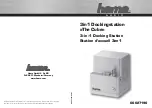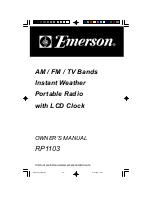
User's Guide _______________________________________________________________________
26____________________________________________________________________ M210543EN-B
value is a Precipitation limit parameter, and it can be changed by the
operator.
In addition to the optical detection, the RAINCAP
®
signal is used in
lowest precipitation intensities. RAINCAP
®
is also used for some
cross-checking of optical detection.
Precipitation cessation is detected when the summed optical signal
amplitudes decrease below another, lower threshold value. The
summing interval depends on the detected precipitation intensity.
Typically, PWD22 will detect precipitation cessation within three
minutes but in low intensity precipitation the detection time may reach
10 minutes.
Precipitation Intensity
The light scattering from a precipitation particle is proportional to the
volume of the particle. For rain this proportionality is quite stable
because the droplets are all quite spherical. In solid precipitation the
shape of particles varies but they are proportional to the average
volume of the particles.
Optical precipitation intensity value is calculated from the signal
change distribution data and then scaled by multiplying with Rain
intensity scale, which is an adjustable parameter. The optical intensity
value is proportional to the volume of the detected particles.
The RAINCAP
®
data is used to calculate another estimate of
precipitation intensity. The intensity is scaled with the DRD scale
parameter. For normal operation in liquid precipitation the scaled
RAINCAP
®
intensity estimate should be higher than the optical
intensity.
The water intensity value in the output messages is based on both the
optical and capacitive measurements. In liquid precipitation the
optical intensity is reported as such. When frozen precipitation is
detected, PWD22 multiplies the optical intensity with a scaling factor
to get an estimate of the water equivalent intensity. This scaling factor
is calculated from the RAINCAP
®
and optical intensities. New
intensity estimates are calculated every 15 seconds and averaged to
get the 1-minute intensity value, which is shown in the output
messages.
















































